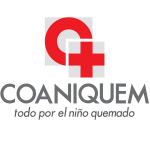COANIQUEM: Safe Niños: Co-creating Innovative Healing Environments for Children
- Global Health
- Sustainable Development

Inspired by the deep connections created by previous Safe Niños Studios, which engaged ArtCenter students to support the work of COANIQUEM — a nonprofit pediatric burn treatment facility based in Santiago, Chile — this Designmatters studio challenged transdisciplinary student teams to co-create playful and therapeutic environments that will welcome young burn patients and their families at COANIQUEM’s two satellite campuses spread far across the expansive country: Antofagasta (in the north) and Puerto Montt (south).
Project brief
Transdisciplinary ArtCenter student teams were challenged to co-create holistic healing environments that would engage patients, families and staff at COANIQUEM’s two satellite campuses, located in two distinct Chilean landscapes: the mining area of Antofagasta in the northern Atacama Desert, and the seaside Puerto Montt, gateway to the Andes and Patagonia fjords. Students traveled to Chile to visit these locations, as well as the main facility in Santiago, for an in-depth two-week field research experience. Upon their return, student teams addressed design challenges to create playful and therapeutic environments that would be high-impact, resourceful and offer real-world implementation.

“In Chile, the patients and their parents were super generous with their time and allowed us to come in during their doctor’s appointments to photograph and interview them. That’s an invaluable experience you can’t get just from reading a website. Being able to see the patients in the different treatment centers and watching how they have changed in even a matter of a couple of days was very inspirational.”
– Nikki Kentor, Student, Graduate Environmental Design
About Burn Patients and Latin America
Every year, more than 7 million children across Latin America are victims of burn accidents. In Chile alone, 100,000 burn accidents occur, with the majority involving children under 5 years of age. Burn injuries are the third-leading cause of death in children under 15 years old.
About 90 percent of burn accidents for children happen at home, even under parental supervision. Youngsters are burned by hot liquids, open fires, electrical fires, fireworks and hot elements from heaters and irons. Recovering from a burn – whether small or large – can be painful, and often involves extensive follow-up care that can take decades. The process is extremely stressful, since many families live in faraway underserved communities.
For survivors and their families, a burn results in psychological, emotional as well as physical scars that change everyone for the rest of their lives.
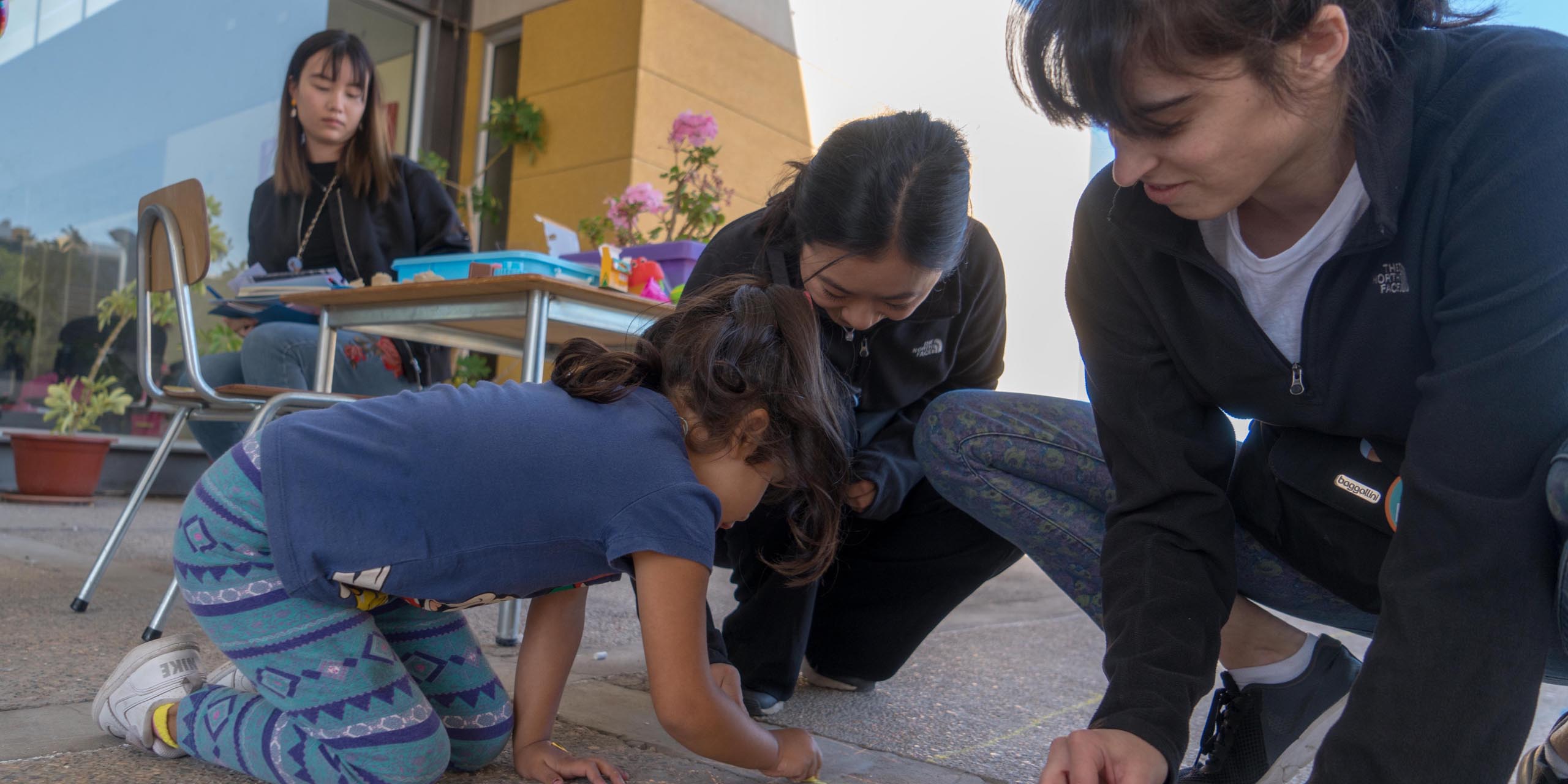
“I believe that design has the ability to touch people and to make spaces where you like to be, spaces where you can relate to one another. I appreciate everything that I have seen here today, especially the creativity. This design from ArtCenter students is really transforming reality.”
– Hernán Ugarte, COANIQUEM Architect
About COANIQUEM
Since its inception in 1979 by Dr. Jorge Rojas-Zegers, COANIQUEM has cared for more than 100,000 children suffering from devastating and life-altering burn injuries. Because of partnerships and international support, COANIQUEM can offer their services at no cost to families, many who live in underserved communities and in poverty.
COANIQUEM treats 8,000 patients annually, with survivors and families living on the facility grounds for weeks and months as they undergo treatments and therapy sessions. The campus is located in a residential neighborhood in Santiago and is accessible by public transportation. Families from across South America travel to the facility for treatment.
Taking a holistic approach, COANIQUEM combines medical attention, restorative healing and comprehensive rehabilitation programs to treat physical and psychological scars. Trained professionals from a wide range of specializations are part of the COANIQUEM facility: medical doctors, registered nurses, physical therapists, occupational therapists, psychologists, social workers and music therapists. Teachers at the on-site school ensure that children of all ages who are undergoing treatments keep up with their education.
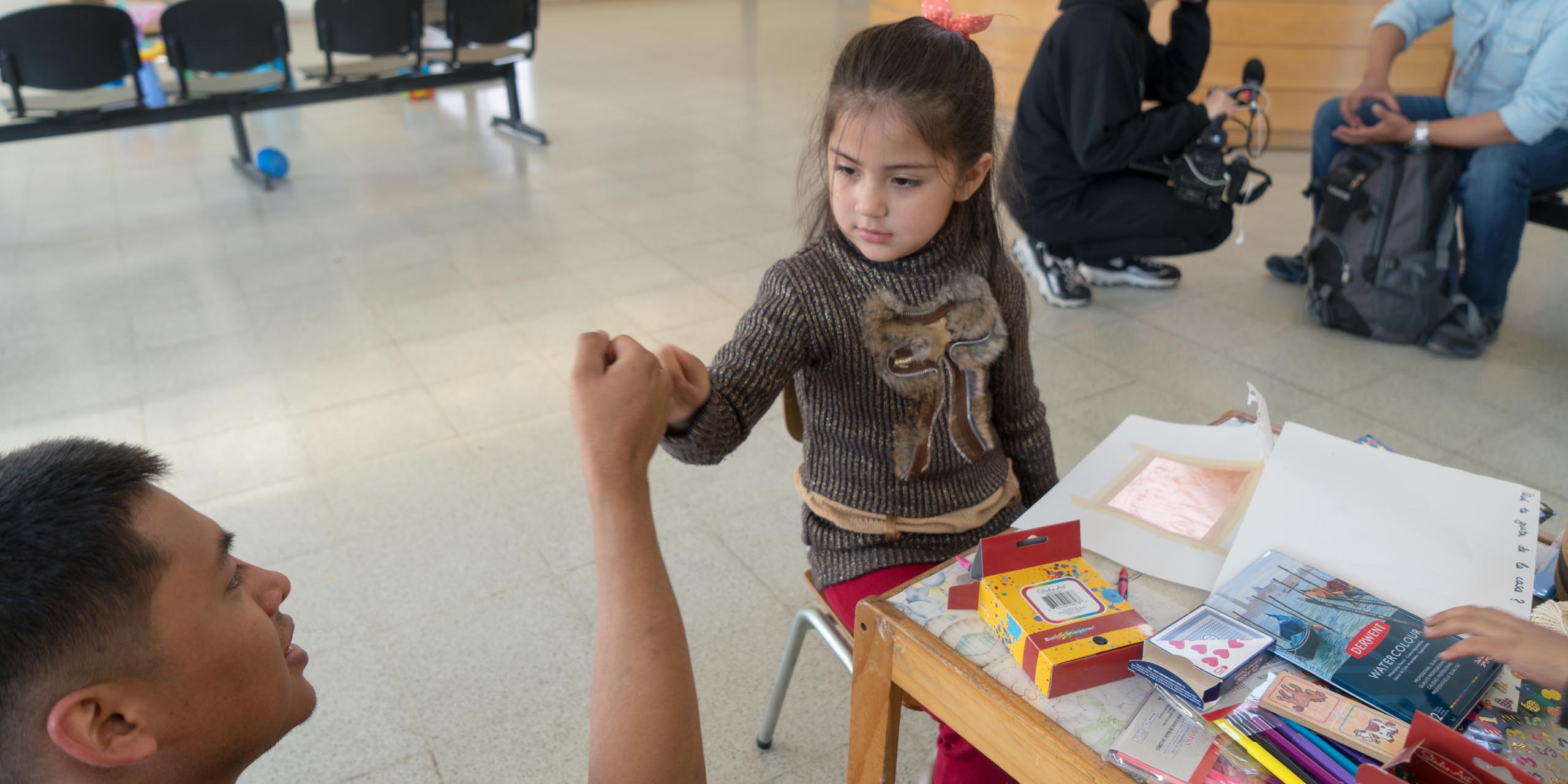
“If we didn’t go to Chile and have that shared experience, we wouldn’t have had the strong bond to collaborate and design this. We’re not designing for ourselves, but for them. The kids were on our minds constantly as we designed how to improve the COANIQUEM experience.”
– Lily Lin, Student, Illustration
About COANIQUEM and ArtCenter
2013: Creating Burn Awareness Campaign for Chile
ArtCenter’s partnership with COANIQUEM began with students producing a public service campaign to help educate residents — targeting children and families — about the dangers of burns. Students created relatable characters, Santi the Cat and the children Lucas and Camilla, and featured them in a series of animated shorts along with book and print messaging to encourage safety around burn hazards.
2016: Designing Welcoming Spaces at COANIQUEM’s Santiago Facility
ArtCenter students re-engaged with staff at COANIQUEM’s main Santiago facility to co-create welcoming spatial environments that would help young patients and their families as they transition through the rigors of the often-lengthy burn treatment processes.
A Healing Tree storyline was designed, with animal characters representing the journey from burn victim to survivor. The encouraging and gentle imagery portrays therapies that children would encounter on their own path to healing. Valued-messages were infused into the architecture of the storyline and graphic design implementations were envisioned in various campus locations.
2016: Main Campus Design Intensive/Graphic and Teen Zone Installation
Building on the work of the previous studio, a summer development seminar invited students to continue to research aspects of campus design as well as implement two projects: installing colorful illustrative graphics on COANIQUEM’s campus waiting room and hallway doors; and establishing a Teen Zone out of shipping containers, shade structures and hammocks to create a place where teen patients can socialize.
2017: Designing COANIQUEM’s Charity Thrift Stores
ArtCenter students designed a system for the 50-plus COANIQUEM charity thrift shops that are either operational or planned throughout Chile. The stores will raise funds and create a community of socially-engaged consumers and volunteers. Students designed the physical retail experience, branding and visual communication elements and strategic resources for day-to-day store operations.
2018: Lollapalooza Pop-Up
To engage new audiences about the mission of COANIQUEM and its new charity thrift store chain, transdisciplinary ArtCenter students designed an easy-to-assemble, pop-up structure/system that was field-tested on site at the Lollapalooza Festival in Santiago, Chile. The transformable modular pop-up structure could also be employed at trade shows, outdoor events and large festivals as well as inside COANIQUEM thrift shops.
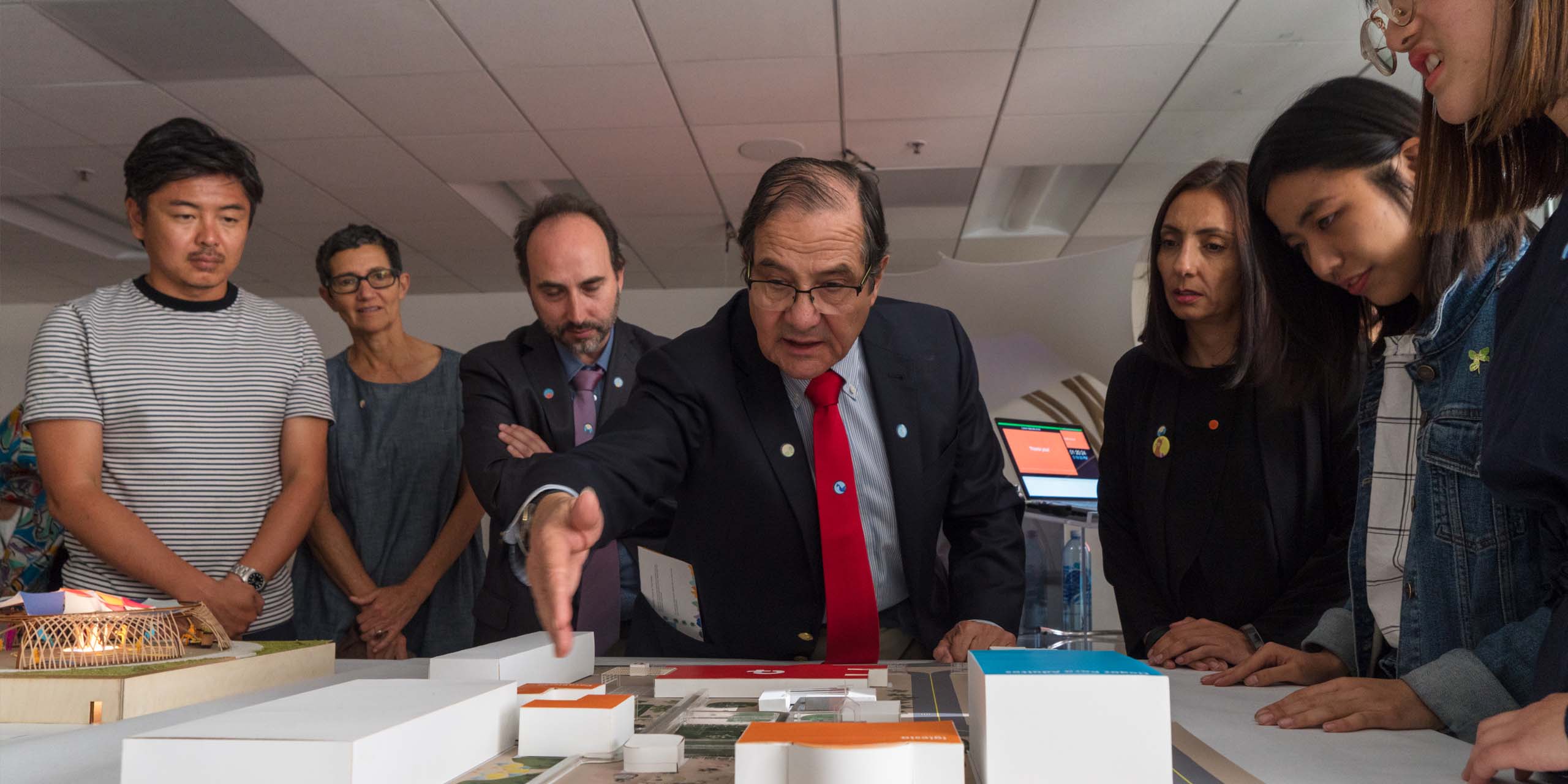
“There is no one personal hero here or figure who took the role of leader; this was an amazing group effort. But it’s more than that. It’s the students, the remarkable teachers and Designmatters staff who all helped make this project successful. Everyone was really committed to the project and they all shared a passion to help in the treatment of the burn victims.”
– Jorge Rojas Zegars, Presidente Ejecutivo
Research and Project Development
Immersive Inspiration: Students in Chile
Before traveling for a two-week immersive research trip to Chile, students participated in workshops that discussed data collection, interviewing techniques and sensitivity training to help prepare them for interacting with young patients and their families.
Once on the ground in Chile, students were introduced to the cultural and physical landscape in addition to the mission and people of COANIQUEM. They toured the main COANIQUEM campus in Santiago and its two outlying facilities: Antofagasta in the north (to be built), and Puerto Montt (rental space) in the south.
Students were divided into teams, each group responsible for a distinct aspect of the project which would be presented at the final as one shared, holistic vision.
Being physically onsite allowed students to best explore design challenges and opportunities as well as to develop empathy with the COANIQUEM mission through personal connections. Teams co-created with COANIQUEM staff who provided first-hand knowledge, resources and real-world feedback on student concepts.
Student documentarians used video and still photography to record team engagement with the staff, patients, families and overall culture of Chile — visually capturing the contrasting landscapes which greatly influenced design-thinking. Portraits of individual families, staff members and others would be powerful reminders to the students after they had left Chile.
Student teams conducted research with all COANIQUEM stakeholders, from patients and families to medical teams and staff, including donors and volunteers. Through formal and informal conversations and exchanges, students discovered personal stories connected with COANIQUEM, and noted the geographical differences, cultural variations, regional legends and folktales in both northern and southern communities.
Students learned the physical and emotional journey that a burn victim (along with family members) takes during their time at COANIQUEM. Teams also uncovered the hopes and fears of family members and other stakeholders
Two Distinct Challenges, One Holistic View
The Chilean locations offered two distinct challenges: the northern campus currently is an empty lot. A 10,000-square-foot COANIQUEM campus (that will also include a separately operated nearby senior living facility) is planned for construction on the outskirts of Antofagasta. Teams needed to imagine a masterplanned campus design that would include parking, treatment facilities, a casabierta (lodging), green space, a church and other amenities. The proposed nearby senior facility will offer opportunities to create outside environments where COANIQUEM families and children could intermingle with elderly residents and their families.
In the south, the Puerto Montt facility is a temporary location situated on two floors of a rental structure. Teams documented the existing space, campus layout and circulation patterns, paying special attention to the unique ecological, cultural, social and historical context to inform their later ideation.
Students sought to thematically unite both designs with the well-established Healing Tree storyline that serves as a central message at the main COANIQUEM campus. Additionally, close attention was paid to local and cultural legends and myths in crafting new narratives.
To augment their design thinking, students referenced well-documented and inspirational case studies that featured effective techniques, principles and social responsibility when designing for children, healthcare facilities and playgrounds.
While in Chile, student teams analyzed their research and insights; they sketched out concepts through brainstorming, mind mapping and jam sessions. They created rough mock-ups to share their ideas with COANIQUEM stakeholders, which furthered the co-creation process.
Workshops in Chile helped students visualize opportunities for design; teams shared observations along with insights and themes as they brainstormed “what if” possibilities. They learned that areas of opportunity are rarely if ever full solutions, but rather stepping stones to generate new ideas with a mindset to look at challenges in innovative future-facing ways.
Before they left Chile, teams pitched their initial concepts to ArtCenter instructors as well as key COANIQUEM staff. Teams explained their ideas through personas, A Day in the Life narratives and other visual storytelling methods. Students described their mission by presenting their research analysis, and insights garnered from their immersive experience. Constructive critiques and inspirational feedback propelled the students to continue their work once they returned to the United States.
Students arrived back from their Chilean experience enthusiastically ready to hone their ideas, continue the co-creation process with COANIQUEM counterparts, and collaborate with their fellow teams to present a unified concept to COANIQUEM.
Ideating, Prototyping, Re-imagining Re-Visiting
Back at ArtCenter, student teams continued their research with field trips to the Huntington Gardens, Shane’s Inspiration Playground in Griffith Park, UCLA Mattel Children’s Hospital, and Santa Monica’s Cayton Children’s Museum.
Teams presented their initial design thinking at a Concept Review to an audience of ArtCenter instructors, students, alumni and other interested parties. They discussed their focus, opportunities encountered in Chile, specific research insights that were inspirational, and an overall concept statement with story. Teams displayed sketches and mockups of their ideation, explaining through conceptual scenarios how their vison will target specific audiences.
Students received positive feedback and forward-thinking suggestions, which once again pushed their collective design to new levels.
Teams were deeply involved in developing their design story, constantly referring back to research, interviews, documentation and observations as guiding points. Their project conclusions and design options flowed organically from their research. Their stories developed out of a need, and presented options on how to fulfill and satisfy a variety of users and stakeholders. Teams named their projects, assigned themes and provided cultural, geographical and social context.
Prototyping and 3-D model making were important process elements, since teams needed to share with one another their proposed direction — which would directly inform other aspects of the overall design. Teams collaborated, and connected often to COANIQUEM staff for ongoing feedback.
A midterm presentation to COANIQUEM staff and ArtCenter students and faculty provided teams with honest reactions and operational steps forward. For the remainder of the studio, students continued to hone and polish their concepts and, where appropriate, craft tangible expressions of their ideas.
Additionally, many students took it upon themselves to create other visual elements of the project to present at the final, ideas that grew naturally out of their desire to support COANIQUEM’s mission and the holistic concepts that were created by their teammates.
Project Outcomes
 close
close
Antafagasta Masterplan
Read moreHelen Huang and Veilinda Rusli
The existing six-acre empty space is visualized as a village where COANIQUEM staff, patients and families will seamlessly intermingle with residents in the nearby senior facility through shared communal spaces.
Physically central in the masterplan is the church, representing the spiritual hub for the COANIQUEM village. Directly across from the church is a “Nest” structure, in the center of a commons area with nearby covered gardens, play spaces, pathways and a café, as well as other strategic green spaces that can be enjoyed by all ages.
To create a more walkable, car-free environment, the access roads and parking lots are imagined on the property’s outer edges to offer more unencumbered interior spaces.
Parking areas and engaging pathways lead patients and families to COANIQUEM’s main treatment facility; children can play in outdoor structures before entering the building. When staying in the casabierta overnight housing, children and teens can also take advantage of nearby soccer fields.
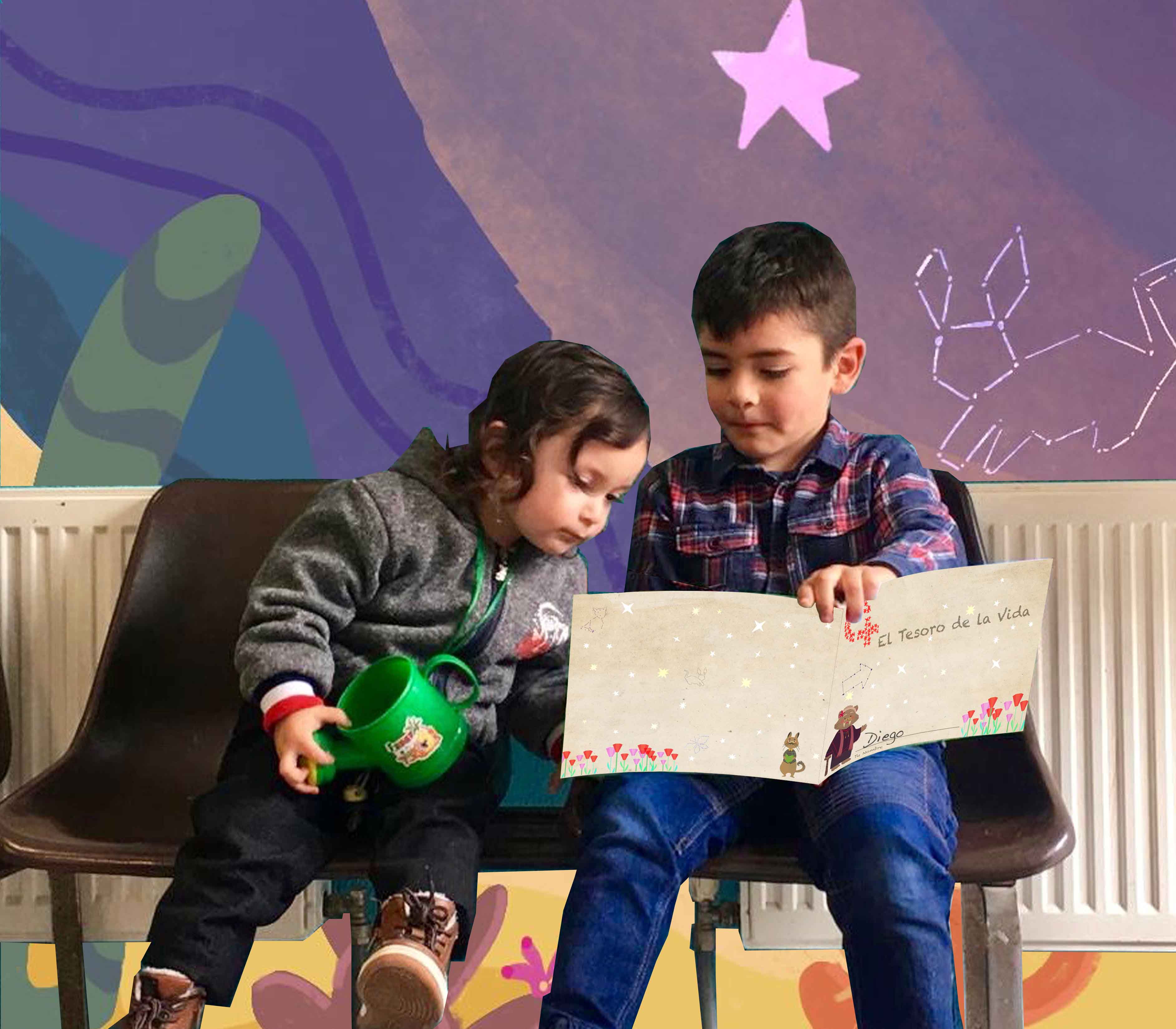 close
close
Healing Narratives
Read moreNikki Kentor, Kristie Poon
To connect with the main Healing Tree storyline and the familiar characters of Santi, Lucas and Camilla, new narratives for each location were created to incorporate and celebrate local culture and community as well as regional geography and wildlife.
Storylines reflect the gentle tone and magical elements of the main Healing Tree tale, but will be effective as standalone narratives. Employing the dramatic beats in Joseph Campbell’s “The Hero’s Journey,” storylines describe to children the difficulties they may encounter on their own healing journey at COANIQUEM, but offer empowering messages of hope and resiliency.
The Healing Treasure: Antofagasta Campus
On this adventure, Camilla and Lucas search for magical gems which, when brought home, will nurture the soil and waters for the Healing Tree. The story incorporates the region’s historic culture of mining as well as the pure, dark skies prized by astronomers.
Lucas wants to show Camilla the night sky, but gets lost walking further into the dark. They meet a friendly viscache — a chinchilla — who tells them he’s heard of the 12 gems. Camilla and Lucas then create a map of where the gems could be hidden.
The two encounter the mystical saber-toothed Anto, the long-living ancient relative of their friend, Santi the Cat. As mentor and guide, Anto accompanies them as they take two separate paths through hidden caverns, archeological sites, underground mines and more. In the end, the duo is happily reunited and Anto gives them a fallen star to take home — a gem that does indeed nourish the Healing Tree.
This story will be told to young patients via a map which the children will each receive as a keepsake. Unfolding the map, children can trace the dotted lines and be introduced to animal characters they will see in COANIQUEM treatment rooms, hallways and outdoor spaces. These recognizable characters will become familiar friends to the young patients who can bring the map with them during treatments. Stickers can be added each time a child undergoes a treatment.
Healing Narratives: The Healing Springs, Puerto Montt
On this adventure, Camilla and Lucas must cross the ocean to find magical fresh water to enhance the Healing Tree. On this island-hopping journey, they find a vessel and, with the guidance of a friendly tonina (dolphin), they encounter storms, a damaged boat, an erupting volcano, a fallen Moai statue, rockslides and an icy spring. Numerous animals help them along the way and, at the end, the children ride home on top of a whale.
The story incorporates the region’s numerous coastal islands and will, for the sake of consistency, utilize the various animal characters found in the Antofagasta narrative.
The narrative will be told via story cards, which patients will receive at each treatment session. One side of the card tells the story, the other features colorful graphics. Layering the images together, the cards show an illusion of the islands (aka treatment rooms) that children will encounter on their journey. Children will collect the keepsake cards and will have the opportunity to affix animal stickers to them at each appointment.
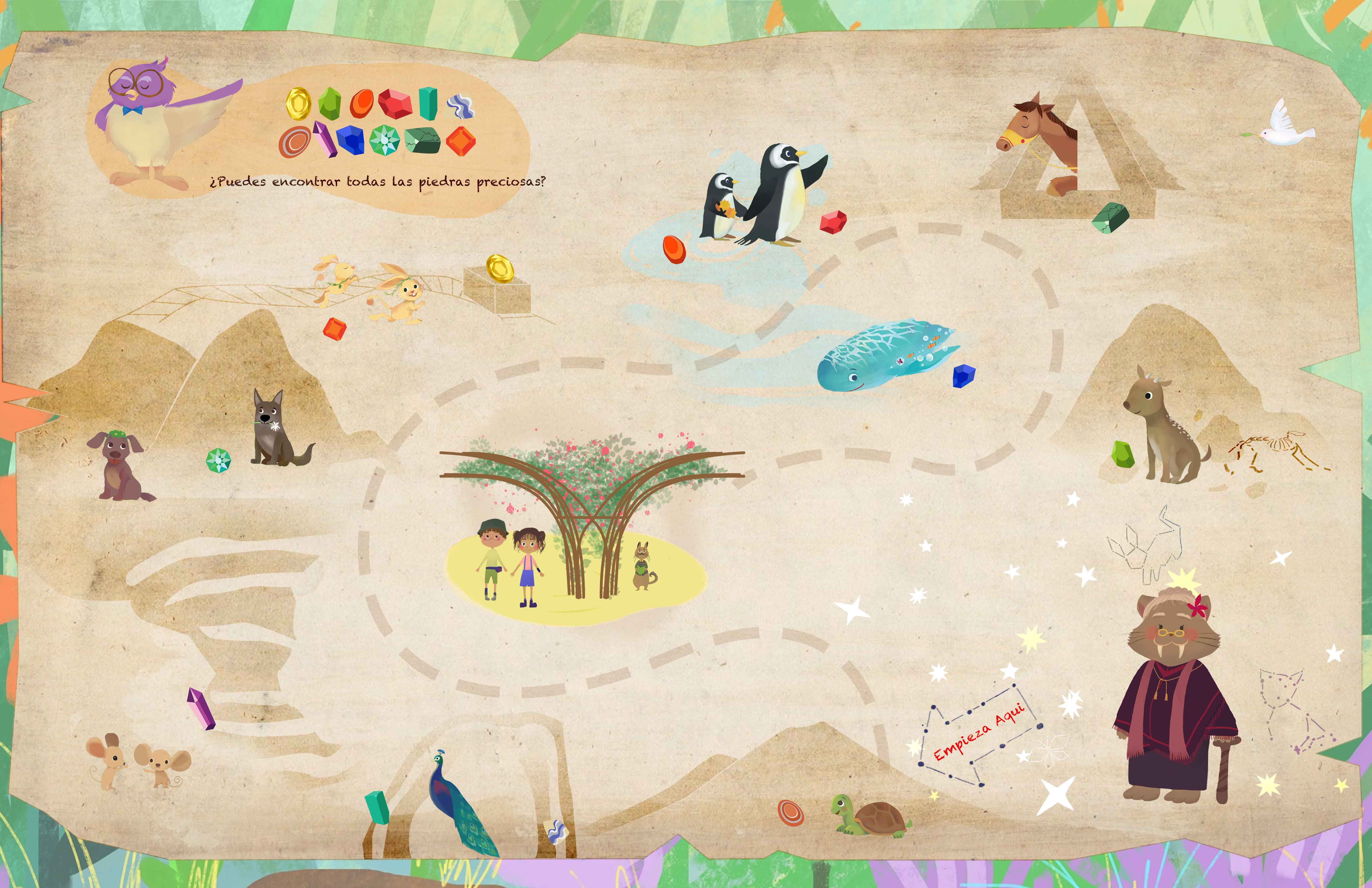 close
close
Spatial Storytelling
Read moreHyejin Kim, Lily Lin
To magically bring the stories to life, graphics and spatial elements of characters and environments will be incorporated in various locations throughout the campus; in treatment rooms, walkways and also the outdoor surroundings. The campus itself can be considered a physical manifestation of an enchanted and immersive chapter in the Healing Tree storybook.
Wayfinding signs, 3D elements, color and illustrations will reflect story moments as well as local environmental landscapes. Imagery depicts characters in properly scaled environments, whether they’re outside under dark skies with twinkling stars, climbing among huge boulders in expansive underground caverns, or experiencing the grandeur of the seaside. Designs need to be economical and appeal to all ages, as well as be pleasing for the staff to see on a daily basis.
Special attention is paid to create graphics at a child’s eye level so young patients will first connect the space with the storyline and not necessary the medical equipment or procedure.
The character designs of Lucas and Camilla are updated to present the siblings in a more relatable interpretation of their personalities and reinforce them as burn survivors. The more outgoing Camilla has messy hair and wears a compression garment on her arm from her injury. Wearing glasses, the shyer Lucas has a leg injury.
The character design of Anto reflects her connection to Santi the Cat, but also is inspired by the ancient Chilean’s mythology of the goddess of Earth, Pachamama.
Spatial Storytelling at Puerto Montt
To integrate this temporary two-level facility of therapy and treatment into the COANIQUEM family, high design values were overlaid with practical, economical needs. Using mural and collaging styles, colorful illustrations brighten the long narrow hallways on both levels for magical interactive moments. A careful use of graphics and spatial storytelling allow for empty “breathable space” so as not to overwhelm the surroundings.
Arriving patients and families at the reception desk in the lobby are welcomed by a large ship graphic that “invites” them on a journey, reflecting the Healing Springs narrative. The ship’s rotating portholes allow children to engage with fun imagery.
Puerto Montt’s hallways reflect the “island hopping” theme with lush colors, spatial and interactive illustrations featuring Healing Springs story card illustrations, animal characters, and the seaside environment. Graphics extend from the wall onto the floor; ocean waves and footprints are also placed underfoot at specific locations.
Wayfinding signage is presented as animal characters peer through portholes. Portholes are placed at a toddler’s level; driftwood plaques are placed higher on the wall so staff, adults and parents can easily identify directions. Additionally, since the signage is temporary, a system of easily replaceable graphic illustrations is created for the circular portholes.
Treatment rooms will receive appropriate illustrations. Because patients spend a long time in the hydrotherapy room, numerous colorful graphics fill the walls and ceiling to help “distract” and entertain children.
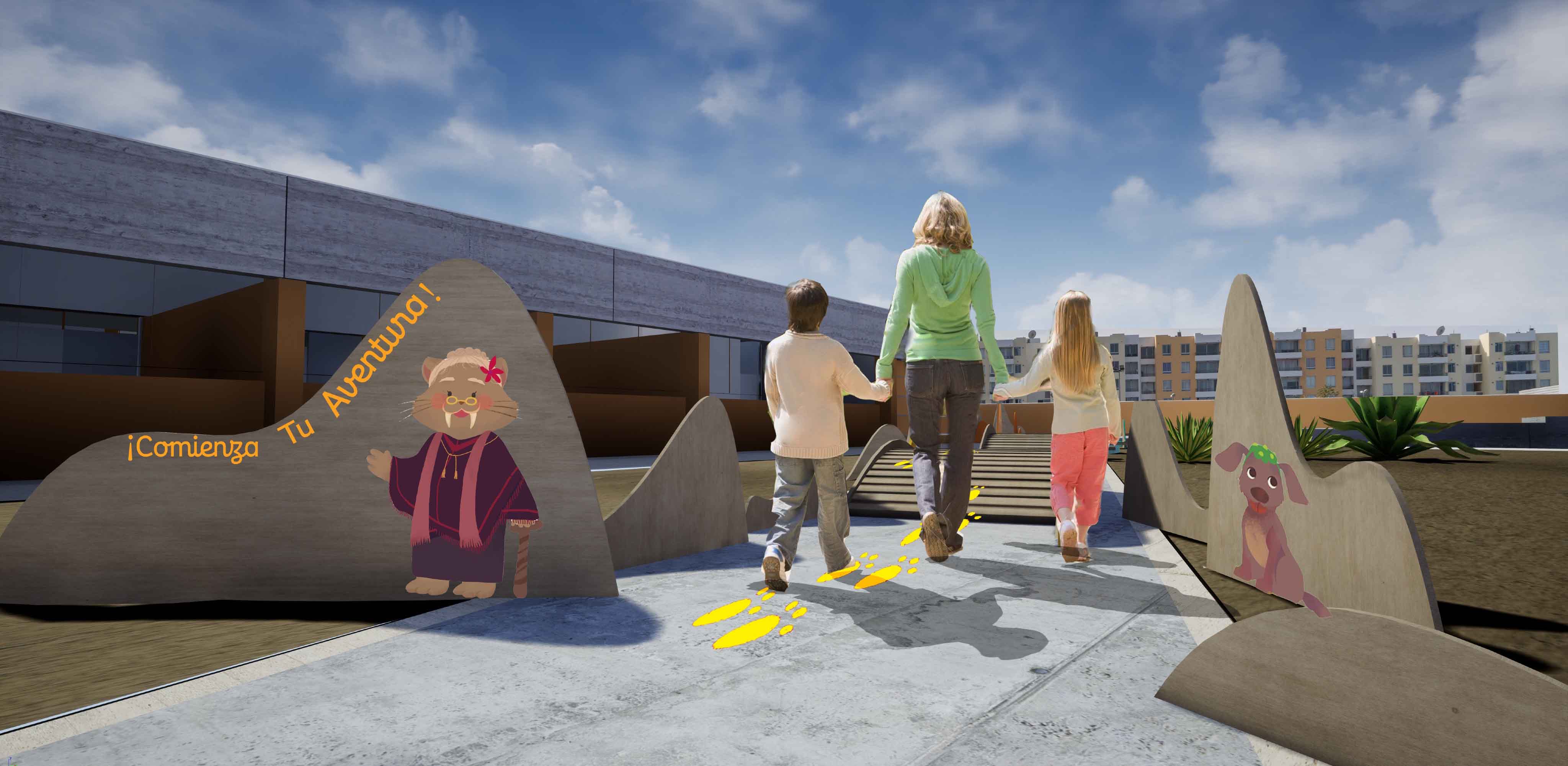 close
close
Mountain Trails to the Valley: The Welcoming Experience at Antofagasta
Read moreIrina Chou and Hasan Zaidi
To capture the beauty of the mountains, help reduce anxiety in patients and family and foreshadow a sense of magic to come, this non-directed outdoor play space encourages children to use their imagination to embark on a mountain journey ending at a waterfall.
Using the Andes as inspiration, mountain-like cutouts frame the pathway that leads families and patients from parking lot to the main COANIQUEM facility/reception entrance. Imagery of Healing Treasure characters — including a welcoming wave from Anto, the saber-toothed cat — are featured on bridge-like ramps. Alternative pathways will be augmented for those in wheelchairs.
The pathway leads to a play area just outside the main entrance. Healing Treasure characters — rabbit, dog and hummingbird — encourage children to engage in structures that resemble mountains in form and color. Some play structures incorporate sensory interactions while others are designed for pure physicality. Benches and table are strategically positioned.
Crossing the entrance courtyard, families open the door to the inside lobby, which incorporates a waterfall-like component near the reception desk. While adults check in, children can “mimic” the check-in process at a work space crafted for their size. At a nearby magnetic wall, kids can move pieces around a fantastical world with Healing Treasure characters.
The waiting room is separated into two sections — younger children on one side, and teens on the other. Soft upholstered wraparound furniture in distinct shapes can be rearranged to create new configurations. Under seats are hidden drawers that contain toys, books, etc. Kid-sized stools also have a second function; opening the top reveals arts and crafts supplies. Furniture will be covered with durable easy-to-clean and hypoallergenic material.
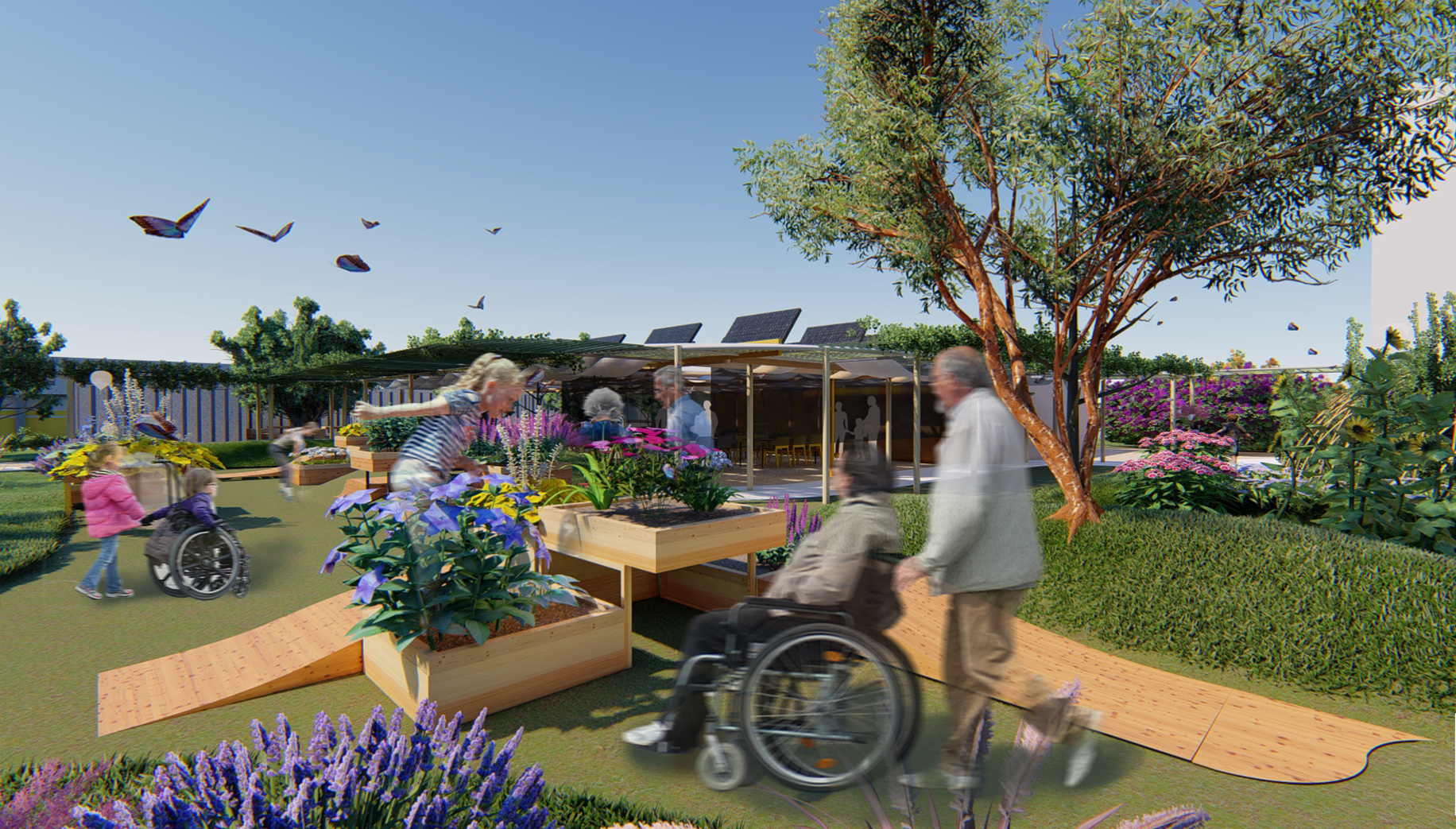 close
close
Garden of Life at Antofagasta
Read more
Senior citizen residents and COANIQUEM guests of all ages can wander through healing and playful green spaces that provide opportunities for engaging intergenerational activities. These sustainable outdoor spaces are designed to be enjoyed and accessed by people of all physical conditions and ages.
Located directly across from the church, a large tree-like structure, the Nest, will serve as a central point of the outdoor areas. This open seating space will be covered with a multilayer fabric shading system to create a cool, welcoming environment. In the middle, colorful bougainvillea vines grow out of a metal tree-like structure. The floor is a labyrinth pattern which can be used for silent meditation before or after worship services. At night, a kaleidoscope display of colorful lighting and projected images on the shade system can, depending on activities, create whimsical or reflective moods.
Connecting the outdoor spaces and to protect visitors from the hot sun, the main pathway will be covered with a woven-like shading structure inspired by local crafts.
Near the Nest, a juice bar serves light healthy refreshments including regional fruits.
The center green zone welcomes children for self-directed play; they can climb into a Gem Cave, a hill-like structure with tunnels. Elsewhere, all ages can enjoy getting “lost” in a garden maze.
Wayfinding signage and spatial statuary incorporate Healing Treasure creatures such as hummingbirds, pudus, rabbits and viscachas.
The plant palette of these green spaces will employ drought-tolerant and native herbs, flowers, trees, bushes, grasses, succulents and edibles.
A multilevel gardening system features raised plant beds, ramps, seating, railing, slopes and stairs. The open design, easily accessed by those using wheelchairs or walkers and by young toddlers, creates opportunities for intergenerational connections to enjoy the plants and/or perform gardening activities side-by-side.
Other shared engagements in the green spaces can include arts and crafts, cooking, playing games and storytelling.
To provide energy for the outdoor lighting, solar panels (installed to mimic woven patterns) will be used on the shading structure, in the shared courtyard and on the main pathway. Other sustainable aspects include a gray water system and a fog-collecting mesh to provide, in the middle of the desert, an efficient watering system for the community gardens and other plant life.
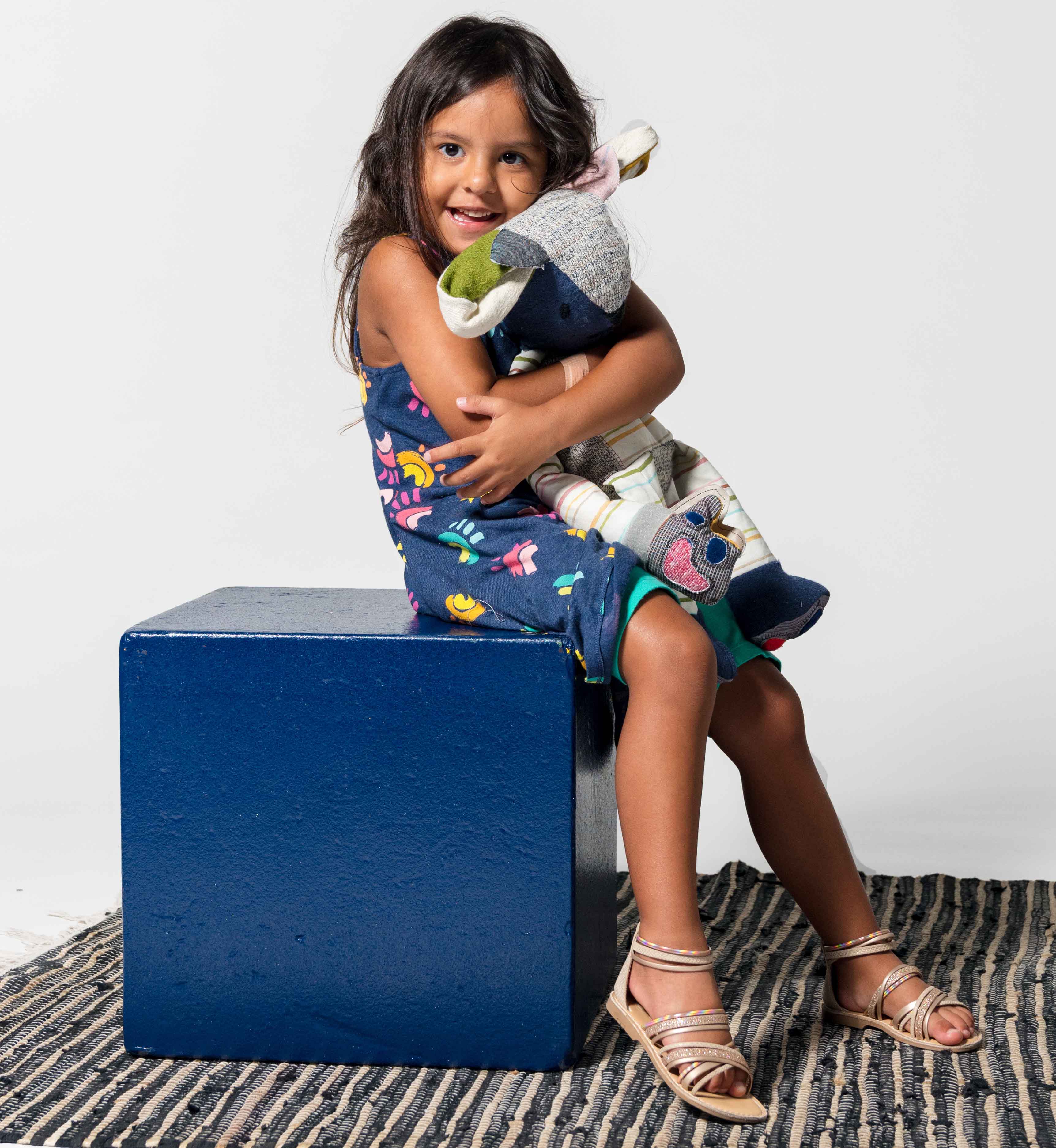 close
close
Engaging Therapy: Jugar y Sanar (Play and Heal)
Read moreCosme Cruz
Rabbit-like healing buddies are dolls that every young child will receive as a patient of COANIQUEM. Through therapeutic play, children will be more comfortable with therapies they will encounter. These soft, huggable creatures act as emotional support and educational tools; they empower children to care for them, mimicking the ways adults are caring for them.
Additionally, the dolls provide opportunities for children recovering from hand burns — one of the most common types of burns in children — to mix play with occupational therapy. Children will practice finger dexterity and become re-acquainted with texture sensitivities. Each doll comes with its own compression garments for head, hands and feet that can be added or removed.
Dolls are fashioned with hypoallergenic poly filling. Upcycled materials gathered at COANIQUEM’s thrift store can provide the base for creating these one-of-a-kind dolls.
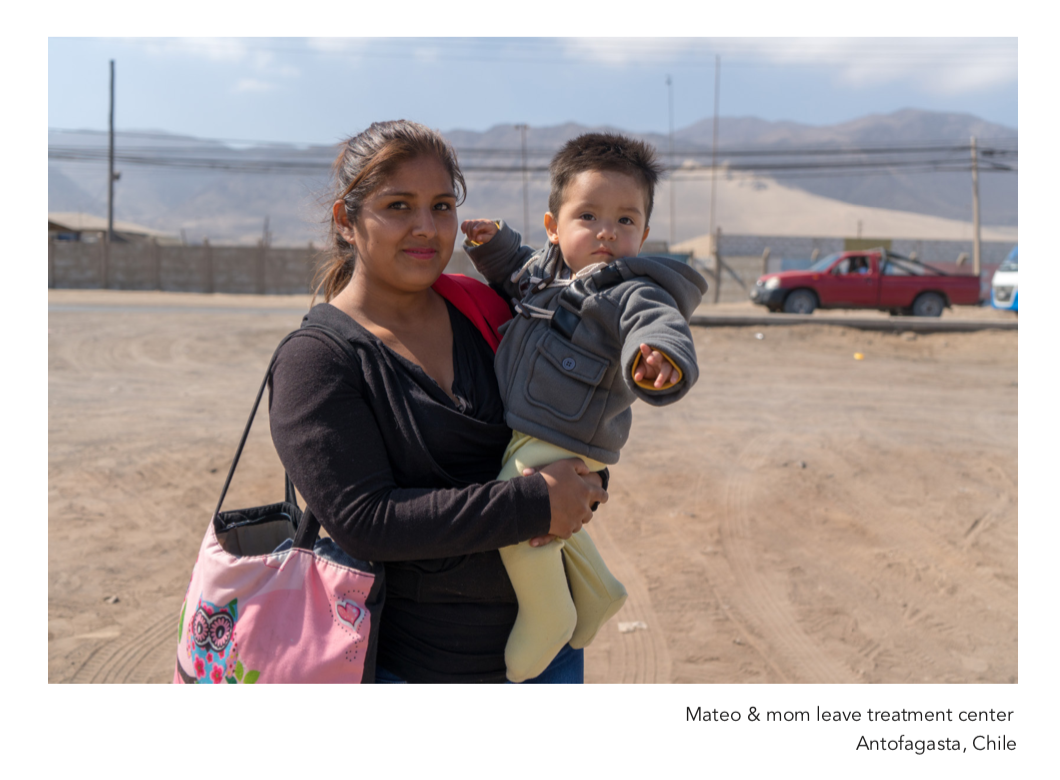 close
close
“Safe Niños” Photo Book
Read moreJuan Roman
A bound photo book documents the students’ travels, the people they encountered and the beautiful Chilean landscapes. The volume also describes their design journey and important milestones in their ideation, with imagery of prototypes and official presentations.
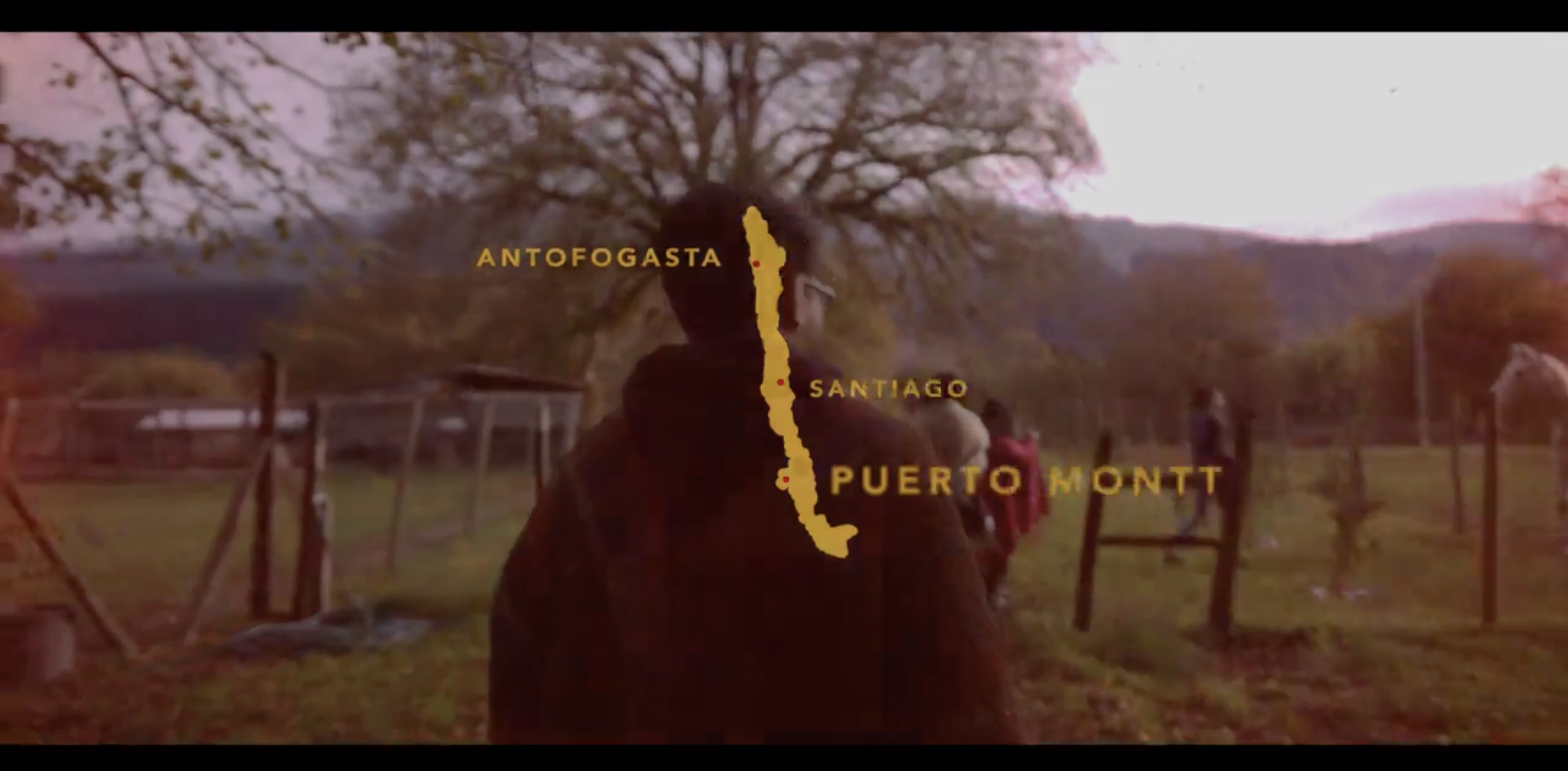 close
close
Film Shorts
Read moreDavid Herrera
A collection of on-location short films capture the excitement of the students’ experience in Chile. Interviews with COANIQUEM staff, patients and family members explain the philosophy and community of care that is experienced daily at the facilities. The students’ bonding experience — to one another, the studio challenge, as well as to the natural landscape and cultural traditions they encountered — is also captured.
Methodology Cards
-
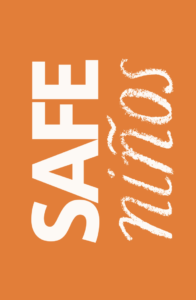
-
Safe Niños iii Method Cards
Download PDF
Booklet
“I hope these students take with them the value of co-creation, of listening and truly collaborating together. That’s a value they can bring with them on any future project — whether it’s a nonprofit or for profit. But I also hope they see the value of giving back to the community at every level possible; how that experience can transcend and strengthen them.”
– Penny Herscovitch, Faculty, Environmental Design


